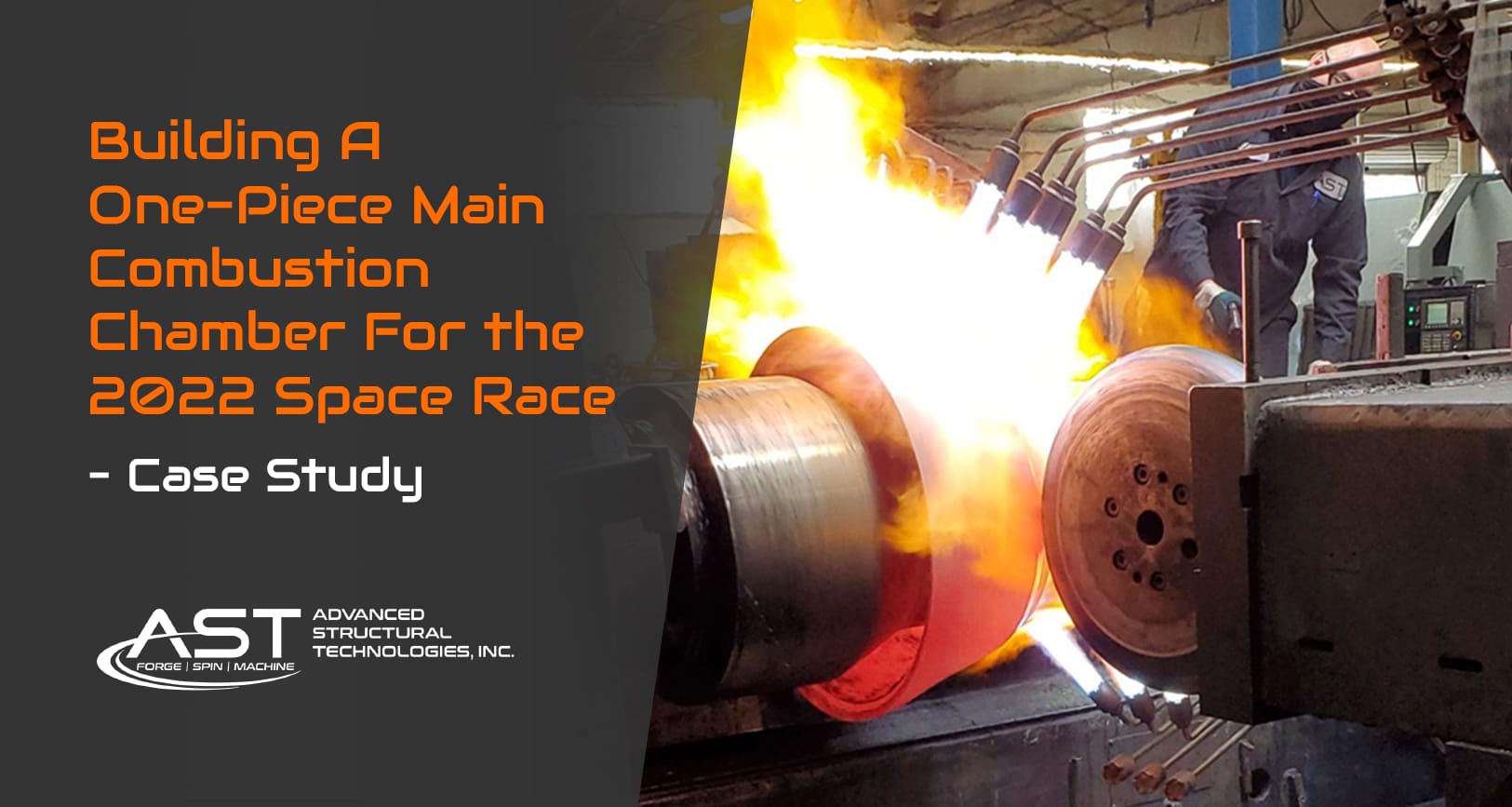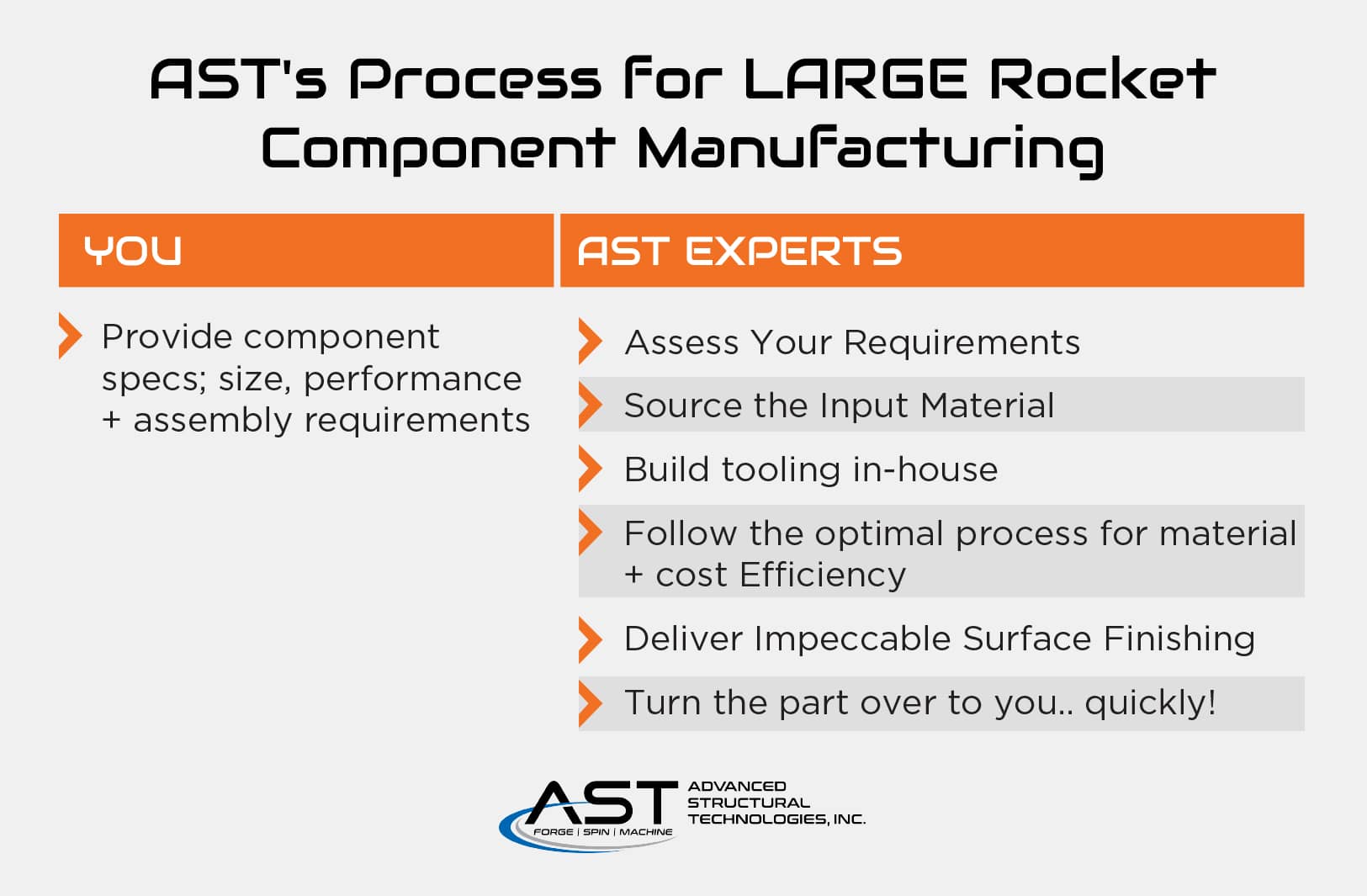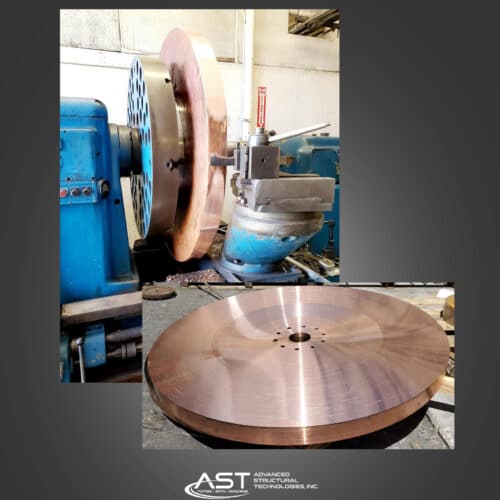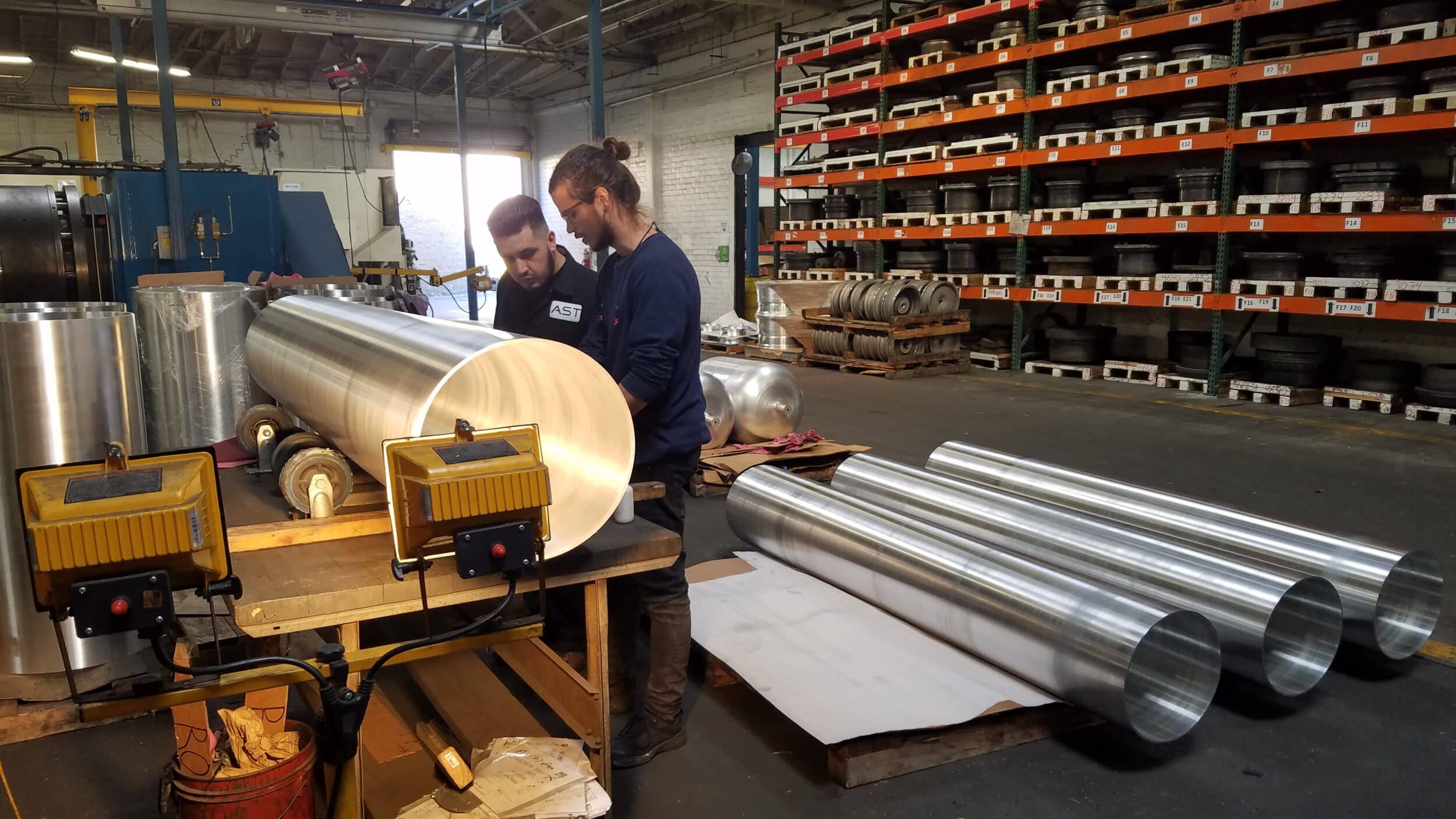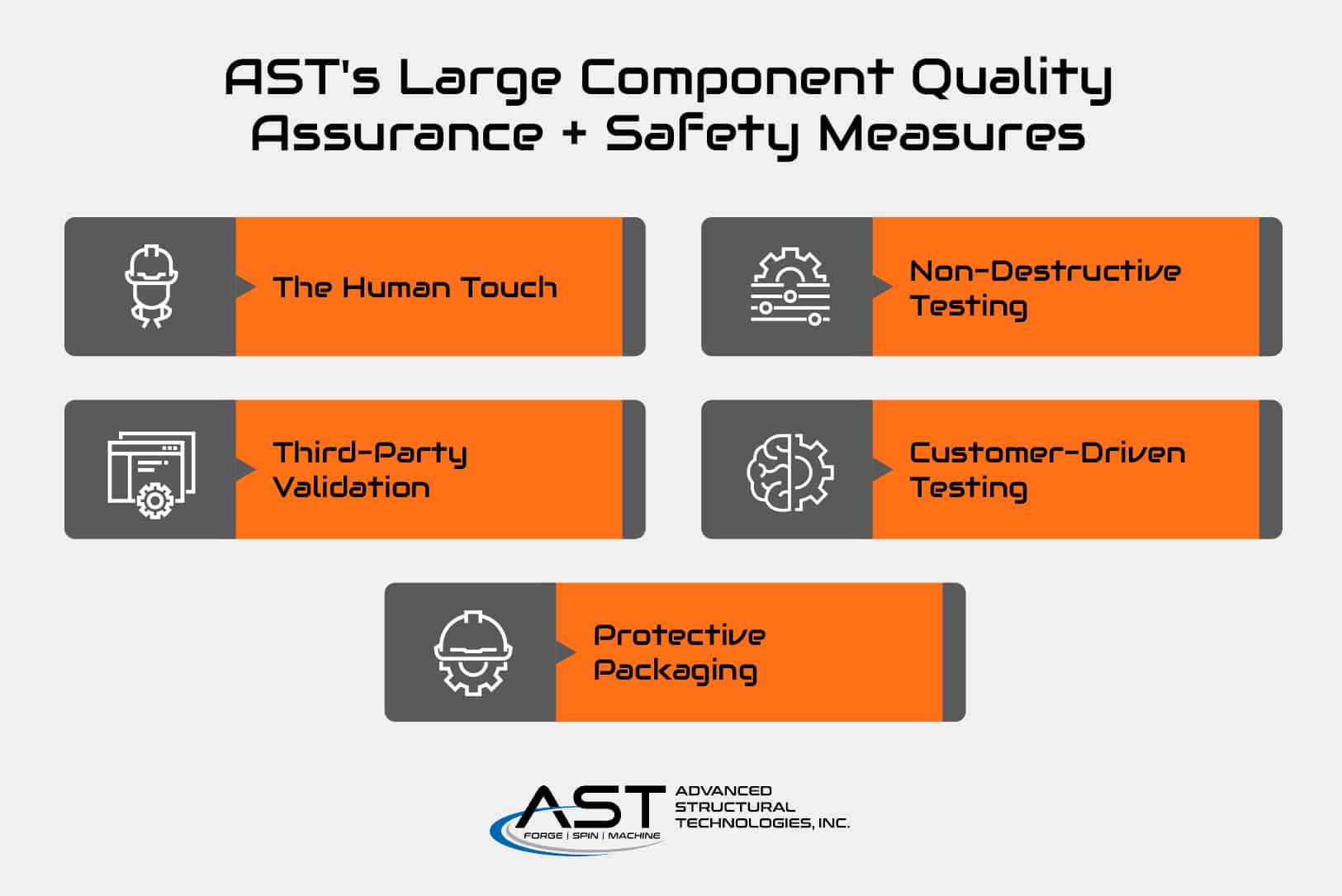How we Produce Large Rocket Components – over 80 inches diameter
 How we Produce Large Rocket Components – over 80 inches diameter
How we Produce Large Rocket Components – over 80 inches diameter
An 80 inch rocket engine component, produced as one-piece, is quite an achievement. A part this size offers numerous advantages like increased payload, capacity and more structural integrity.
Efficiently producing the large, seamless, weld-free parts needed for space missions is a constant struggle for manufacturers.
Fortunately, at AST we’ve found ways to overcome these hurdles, through Metal Spinning.
We help create rocket components that are truly a spectacle to behold. And crucially; safe to use and structurally sound.
Join us as we unravel the challenges of producing LARGE rocket components.
We’ll provide insight into how AST’s pioneering approach addresses the unique and evolving demands of the space industry.
Why are Large Rocket Components Difficult to Manufacture?
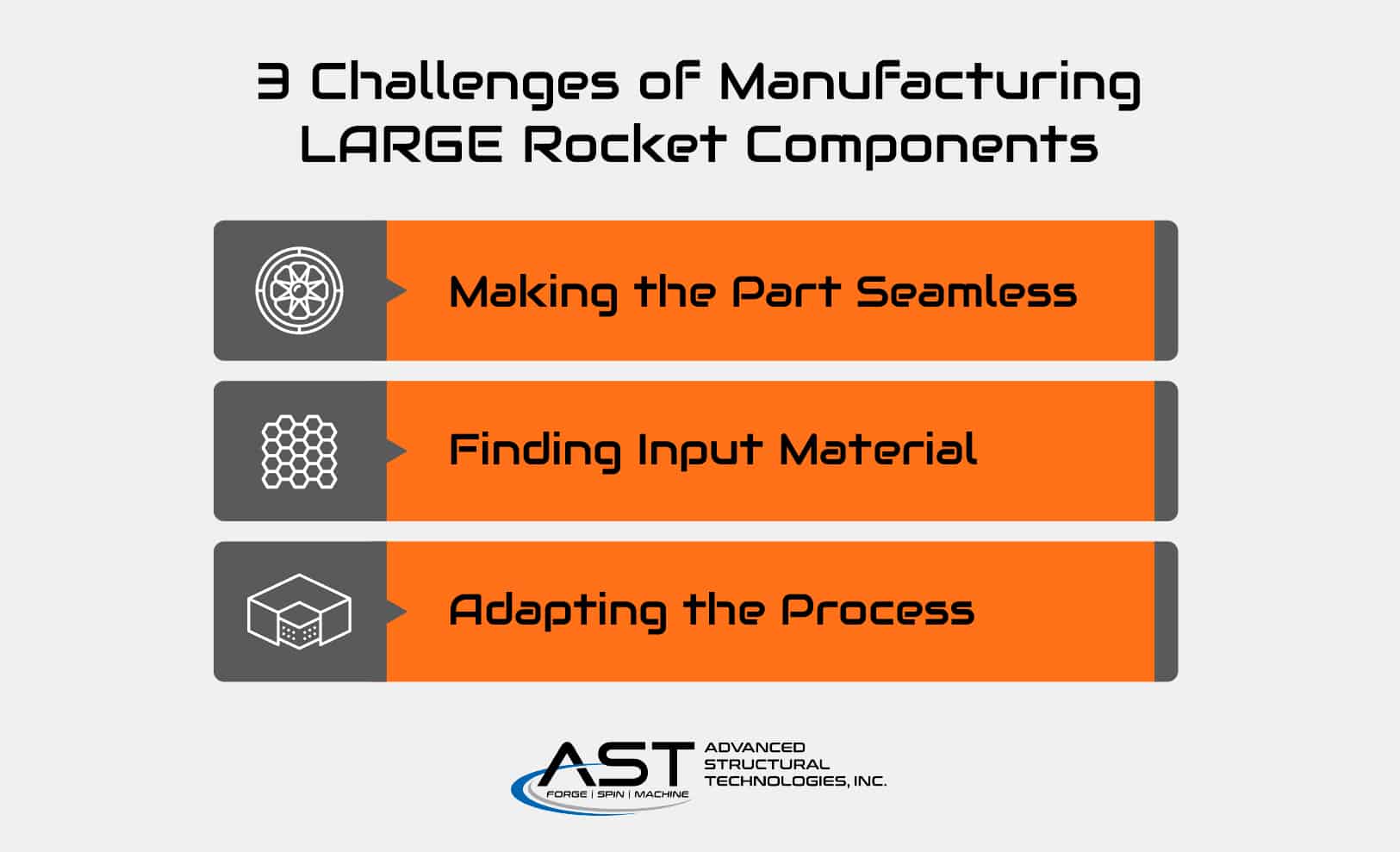
Rocket components without seams or welds are more structurally sound.
However, producing them poses a fundamental challenge.
As these components increase in size, the hurdles in manufacturing multiply, exponentially.
In this section we’ll explore the complexities of this process and delve into how AST tackles these challenges to deliver seamless, high-quality rocket components.
Making the Part Seamless
Building a part from multiple pieces incurs substantial post-processing expenses, making seamless manufacturing an attractive proposition.
Metal spinning offers a solution by using less material compared to crafting parts from solid blocks, providing value in terms of cost and material efficiency.
Finding Input Materials
For large parts over 80-inch, finding suitable input materials becomes a challenge.
AST addresses this by carefully managing the quality, processes, and machine capabilities..
But as you’ll discover later in this article, this is just one of the hurdles we overcome when managing production for these sizable components.
Adapting the Process for Different Components
Our processes can be applied to various components like rocket nozzle liners, combustion chamber liners, domes, and tubes, amongst other rocket engine parts.
Because, despite differences in components, they share “axial symmetry”.
This symmetry allows for the same benefit that metal spinning provides, which is to stretch the metal vs. cutting away metal, ultimately providing a huge material savings.
Whether crafting a combustion chamber liner, nozzle liner or dome, the process involves carefully managing steps to meet customer specifications.
The challenge lies in handling large parts, requiring meticulous planning, more tonnage, and increased heat and energy to shape the material.
For example; AST recently accepted a challenge to help construct a one-piece main combustion chamber (MCC) for the 2022 “space race”.
The project required reducing the manufacturer’s component cost, while maintaining the utmost structural integrity to prevent failure under the MCC’s intense operating parameters.
Our team executed a highly specific process, in order to produce a single-piece design with no welds or joints that would meet these standards:
1. We carefully sourced a specialty copper alloy blank
2. Used a spin forming machine to coax the kitchen table-sized disk, expanding it to more than four feet in diameter and nearly three feet in length
3. Leveraged a newly rebuilt Kieserling hot spinning machine to elongate the cone shape to create an integrated chamber at one end
The result?
A part that’s 45″ in diameter by 60″ in length, dimensions that we verified on one of our FaroArm laser-scanning portable CMMs (coordinate measuring machines).
You can learn how we did this in more detail in the full case study below…
AST’s Process for Large Component Manufacturing
Step 1 – You provide the shape
The first step is for the customer to provide component specifications, including; size, performance requirements, assembly considerations and critically – the shape.
With multiple machines, techniques and processes in place, all under one roof, we’re able to advise clients on the fastest and most efficient production process for their case.
For any shape required—be it cone, tube, dome, or finished cylinder—our suite of equipment and capabilities, including; rotary forging, metal spinning, and flow forming, ensures the precise match for each client’s project needs.
Step 2 – Our Experts Assess Your Requirements
AST’s expert team of engineers have the ability to quickly assess each customer’s requirements and reverse engineer all the processes to optimize for their desired outcome.
As a customer, you don’t need to worry about the specifics. Just provide the shape you desire.
It’s our job to help you achieve the result you want – size, shape, metal properties, assembly considerations.. while factoring in your scheduling concerns and cost targets.
Step 3 – We Source the Input Material
As mentioned earlier, this also applies to the shape of the initial input material.
We can start from a billet, a plate or disk. Our in-house capabilities and network of suppliers provide us a wide array of materials to choose from.
Like this forged copper blank used to make a chamber liner.
We can achieve the shape through multiple steps or a single step – however it works out most efficiently.
This provides inherent customization and flexibility.
Step 4 – Build tooling in-house
At AST, we build our tooling in-house.
This is critical to the project’s workflow – eliminating significant time delays associated with outsourcing.
The autonomy also allows us to carefully manage tool quality, processes, and machine capabilities to ensure each tool is perfectly optimized to meet precise customer needs.
Our in-house tooling process is vital for spinning parts accurately according to customer project specifications, budgets and timelines.
Step 5 – Follow the process for optimal efficiencies
While automation plays a pivotal role in AST’s operations for smaller parts, it is selectively applied in space applications dealing with larger components.
Larger parts require close monitoring so little or no materials are scrapped.
Customers may request engineering changes, so automation is not always the best application for large components manufacturing.
For large volume orders of smaller components, we leverage robotics for certain tasks.
However, with large rocket components, a more hands-on approach is adopted, with a keen focus on monitoring each part to ensure adherence to customer tolerances.
Step 6 – Deliver Impeccable Surface Finishing
Beyond precision machining, AST takes pride in its expertise in delivering exact finishes as per customer demands.
We’ve also done this in the tank manufacturing arena. Where we demonstrated the capability to create impeccable surfaces, to ensure high-quality finishes for tank parts.
Setting a new standard in precision manufacturing.
Step 7 – Turn the part over to you.. quickly!
By eliminating external dependencies and controlling the tooling process, we significantly reduce setup time, contributing to an overall fast turnaround.
This internal control ensures a streamlined production pipeline.
Once the tooling is in place, the CNC program facilitates the rapid and repetitive production of high-precision components.
The combination of CNC programming and precision tooling guarantees consistent and reliable results.
Our unique capabilities enable us to duplicate our processes to produce large rocket components rapidly, meeting tight schedules without compromising precision.
In 2024, AST will be adding an expansion facility for its Space Market, as well as adding a spin machine with massive horsepower for manufacturing even larger space components.
This will add more capacity and even faster turnaround times for our customers.
Our Large Component Quality Assurance and Safety Measures
As components grow in size, ensuring structural integrity becomes a critical concern.
AST relies on careful engineering, extensive experience, and the expertise of trained professionals to guarantee the highest standards of quality and safety.
Here are the additional steps we take to ensure your part is safe to use. And ensure that it doesn’t get damaged in transit.
Human Touch in Quality Assurance
While advanced machines and capable programs play a crucial role, our skilled and trained operators are instrumental in overseeing equipment and processes.
This human element is essential when handling the substantial energy and heat required for large and heavy parts.
Testing, Inspection and Beyond
Every part undergoes testing and inspection as a standard operation at AST.
We employ various non-destructive testing methods, such as ultrasonic or eddy current inspections, tensile testing, and microscopic examinations, both in-house and through certified external labs.
Third-Party Validation
AST goes the extra mile by sometimes sacrificing a quantity of parts for quality inspection.
This ensures unbiased third-party validation, providing comprehensive insights into material properties beyond AST’s internal assessments.
Customer-Driven Testing
The extent of testing depends on the specific program and customer requirements.
AST tailors its quality testing to meet the exact specifications outlined by customers for their respective programs, whether for standard operations or the elevated scrutiny of human space flight.
Protective Packaging
With the finished product ready for shipment, AST employs meticulous engineering in packaging design. Large boxes are not just a formality but a critical aspect of the process. Each part is custom-packed in a case designed to fit precisely, ensuring secure transit without any risk of damage.
Why you should choose AST for your next project
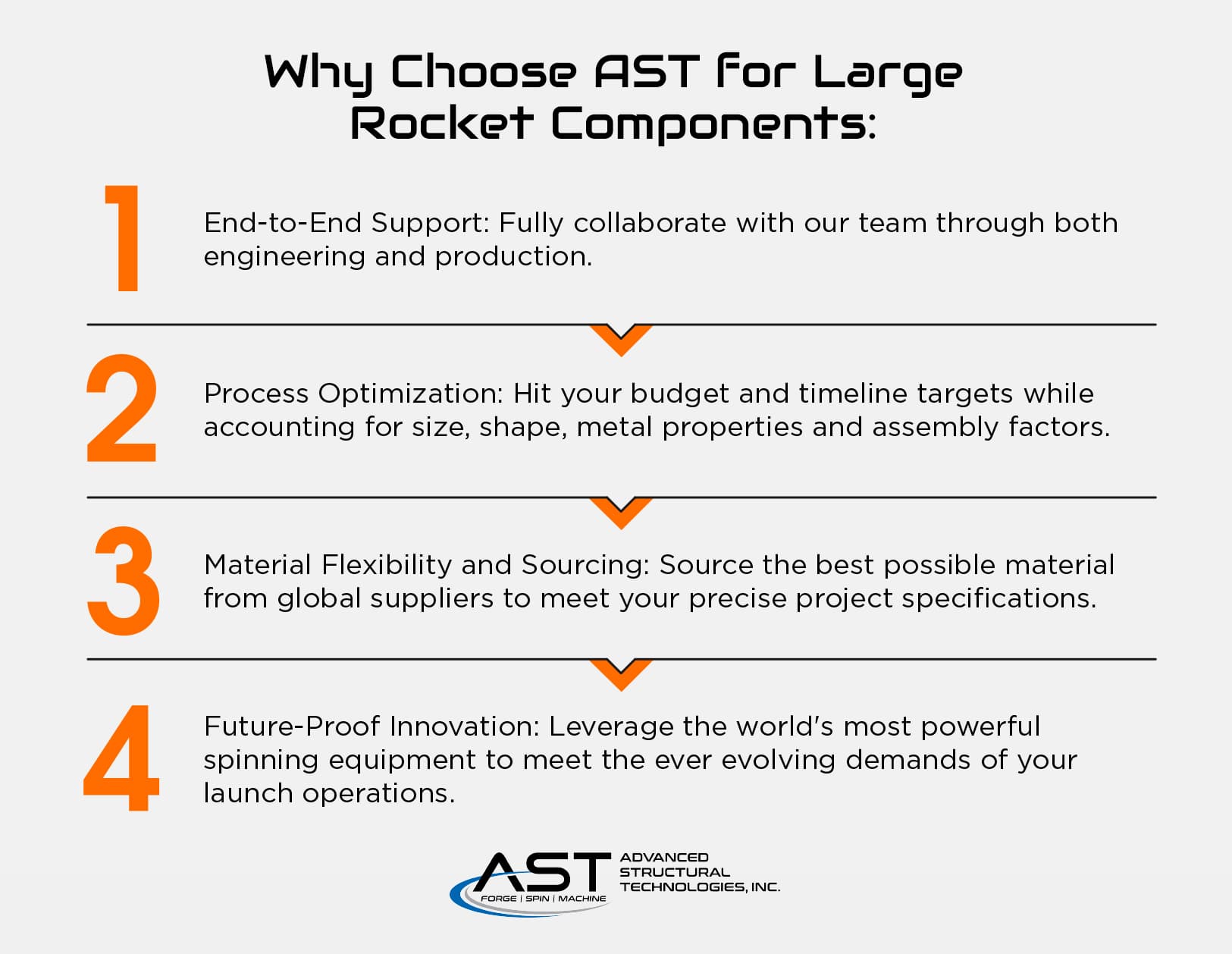
Our attitude of “we’re willing to try” has carried us through an immense number of situations.
From when we produced our first combustion chamber 15 years ago, to working with the modern materials of today.
We’re confident we can tackle any challenge you throw at us. We WILL make your part!
Because we have a process that we go through. It doesn’t matter whether we’re dealing with copper or stainless steel or whatever.
There’s a learning process for each and every shape. We’ll work at it with our proven step-by-step process and crack the puzzle.
Here are a four more reasons you should choose us for producing your next part…
1. End-to-End Support: We seamlessly support customers through both engineering and production phases, providing valuable flexibility and collaboration that sets us apart in the space industry.
2. Process Optimization: We go beyond manufacturing by actively working with customers to produce large, complex, one-piece components while optimizing and integrating into their own processes. We have the utmost commitment to efficiency and reducing the workload for our clients.
3. Material Flexibility and Sourcing: We’re able to adapt to various material forms and efficiently source from global suppliers, while maintaining flexibility and dedication to meeting precise project specifications.
4. Future-Proof Innovation: Our investment in the world’s most powerful spinning machine exemplifies our forward-thinking approach. We’re 100% committed to tackling the largest and most complex components with unmatched, innovative solutions to meet the space industry’s ever-evolving demands.
Let’s discuss the unique needs and requirements for your next project → Speak to sales.
Book a call today with AST to discuss your launch project manufacturing needs with a team that understands the ever-changing demands of your industry.


